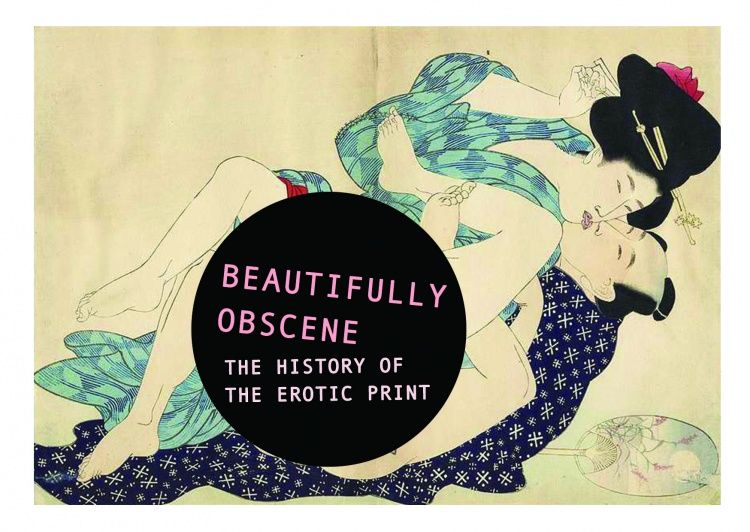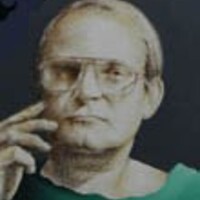Roland Delcol
"Beautifully Obscene: The History of the Erotic Print", University of Kent, Studio 3 Gallery.
Studio 3 Gallery School of Arts Jarman Building University of Kent Canterbury CT2 7UG
"Featuring over 50 works from across Europe and Japan and Spanning the course of 500 years, Beautifully Obscene incorporates the different approaches used by artists in order to explore themes of sexuality, gender roles and power.
The artists whose works will be exhibited are: Pietro Aquila, Pietro Santi Bartoli, Monika Beisner, Jan de Bisschop, Emma Bradford, Simone Cantarini, Stephen Chambers, Marianne Clouzot, Gabriel Dauchot, Angele Delasalle, Roland Delcol ,Amandine Dore, Tracey Emin, Brad Faine, Henri Fantin-Latour, Valentin Le Fevre, Ian Hamilton Finlay, Othon Friesz, Frans de Geetre, Paul Guiramand, Sarah Hardacre, William Hogarth, Katsushika Hokusai, Anita Klein, Rudolf Koch, Antonio Lafrery, Martin Van Maele , Albert Marquet, Henri Matisse, Patricia Nik-Dad, Pablo Picasso, André Provot, Felicien Rops, Berthommé de Saint-André, Kitagawa Utamaro, Alex Varenne, Marcel Vertes , Denis Volx, Lucas Vorsterman, and Shane Wheatcroft." By Gary Hughes, 16 April 2015
Roland Delcol
The Ankle Strap is part of a series of twelve lithographs by Belgian hyper-realist Roland Delcol. Born in 1942, Delcol studied at the Académie des Beaux –Arts de Saint-Gilles from 1965 to 1971 after three years at the University of Brussels. During his time at art school, he studied lithography in Milan before returning to this technique at Paris’Atelier Jobin in 1975, the year that the Ankle Strap was printed. Whilst photo-realist in style, this print is rooted in the surrealist tradition of the artists who influenced him: René Magritte (1898-1967) and Paul Delvaux (1897-1994). Delcol’s depiction of the female body, however, moves beyond the work of these artists in furthering surrealist eroticism and using a postmodern approach.
The Ankle Strap’s series of lithographs were intended to accompany the erotic novel Emmanuelle by Emmanuelle Arsan which explores the love/lust dualism by contrasting a woman’s series of anonymous erotic encounters with her desire for love in her sexual relationships. The print’s relationship to an erotic novel is not unprecedented in surrealism: Salvador Dali made a series of prints to accompany Leopold von Sacher-Masoch’s sadomasochistic novella “Venus in Furs” and Pauline Réage’erotic “Story of O” inspired prints by Leonor Fini.1 Indeed as explored by Neil Philip earlier in the publication, many Surrealist artists created works immersed in sexual themes.
Delcol heightens the eroticism in his print by itemising parts of the female body whilst working in a realist style. Much of The Ankle Strap has been left unprinted or shaded in very light tones, heightening the impact of the solid black of the shoe strap and the pubic hair as focal points of the image. Highlighted is the play on the traditional connotations of a woman revealing her ankle, a suggestion not only referenced but turned upside-down as the woman’s ankles are only clothed part of her body. The second highlight, the woman’s genitalia, works alongside the photo-realism to suggest an explicit depiction of a woman more life-like than the sketchy nudes of Dali and Fini. By removing the woman’s head from the picture, Delcol follows “the precedent of surrealist paintings of women cut up or disassembled”.2 Robin Adèle Greeley argues that in works like “Le Viol” (1935), which depicts a woman’s eyes and mouth replaced with her breasts and genitals, Magritte depicts the woman’s speech as competing with her sexuality.3 This tradition extends from Gustave Courbet’s “L’origine du monde” (1866) and Marcel Duchmp’s “Etant donnés”1, “La chute d’eau”2, “Le gaz d’eclairage” (1946-66) where woman are show only through the depiction of their genitalia. These fetishist images also relate to the French blazon tradition where only part of the subject is revealed. Delcol’s cropping of the image silences his subject, replacing her words and identity with an eroticism both explicit and suggested.
The Ankle Strap’s anonymity and relationship to an erotic novel develops Delcol’s work beyond surrealism not only in terms of eroticism but also in the context of Michel Foucault’s essay “Ceci n’est pas une pipe”4. Writing about Magritte’s painting “The treachery of Images” (1928-9) that depicts a pipe with the latter phrase below it, Foucault distinguishes the concept of “resemblance”, when a signifier imitates a primary referent, and “similitude’, when the referent of the signifier is itself another signifier leading to a chain of displaced meaning. Foucault argues for similitude being characteristic of Magritte’s work and exemplified in “The Treachery of Images”. Delcol, however, exaggerates this beyond that Magritte.
Firstly, Delcol’s unbound lithographs are presented separately from the novel’s text, removing any clear connection between the prints and the passages of the text they might illustrate. The lithographs allude to the text but what they signify is unclear. As the text itself is a signifier to ideas, concepts and characters, relationship of The Ankle Strap to a work of literature sets Delcol’s prints in a chain of signifiers, the end of which we are prevented from reaching. Secondly, Delcol’s prints in a chain of signifiers, the end of which we are prevented from reaching. Secondly, Delcol’s photo-realism increases the length of this chain of referents. Delcol’s lithographs are not invisible; the images are so close to being photographic that the large spaces of unmarked paper and the texture of the paper betrayed by the moments where the black ink is disturbed, strike us with an awareness that the image is based on a photograph but is not one.5 This photograph adds an additional signifier to the chain, distancing us from this woman whose identity, as we have seen, has been cropped out of the image, ending this chain of reference in mystery.
Under Surrealism’s influence, Delcol’s prints accompanies an erotic novel and depicts an anonymous woman whose identity has been replaced by her sexuality. The photo-realism in his work builds on these surrealist foundations, making the work more explicitly erotic, and further distancing us from the ultimate reference and meaning of the work. Delcol exaggerates the distance between our understanding of this woman as a sexual being and as a person, and we find ourselves, like Emmanuelle, with love both separated from lust and out of reach.
By Georgia Kelly.
Refernces
Vincent Gille, “Love of Books, Love Books”, in Surrealism: Desire Unbound, ed. By Jennifer Mundy (London: Tate Publishing, 2002), pp.125-35.
Robin Adèle Greeley, “ Image” Texts and Female Body: René Magritte and the Surrealist Publication”, Oxford Art Journal, 15.2 (1992), 48-57 (p.49).
Ibid, p.50.
Michel Foucault, “Ceci n’est pas une pipe”, trans. Richars Homard, MIT Press, 1 (1976), 6-21.
A reference to Roland Barthes, « characterisation of the Photograph as invisible as we look past it to the image it shows”, ( Roland Barthes, “Camera Lucida": Reflections on Photography (London, 1933).


